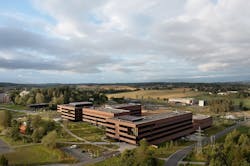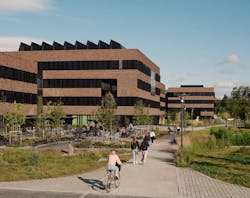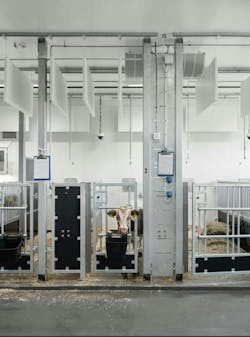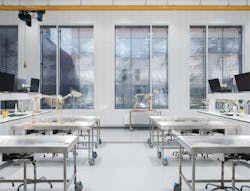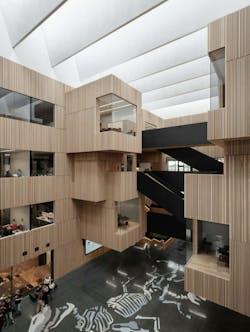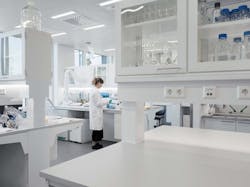New veterinarian building is Norway’s largest ever development in the university sector
A new 678,000-sf veterinary building has completed at the Norwegian University of Life Science's (NMBU) Campus Ås. The Henning Larsen-designed project brings together research facilities and teaching space for veterinary medicine in one of the most advanced veterinary buildings in Europe. The project represents the largest overall development in the university and college sector in Norway’s history.
The Veterinary Building at Campus Ås is eight distinct but linked buildings that unites previously disparate resources. The building includes over 2,400 rooms across the approximately 678,000 sf space, rarely rising over four stories. It is subdivided into eight wings that are distributed between the building’s two primary programs: the Norwegian Veterinary Institute and the Norwegian University of Life Science.
The sensitive and hazardous spaces within the campus, such as the Veterinary Building’s laboratories for infectious disease research and surgical suites, are bound to the center and protected by a permeable barrier of public program that rings the campus’ exterior. The building is also broken into smaller modules that can be individually locked down if needed.
Researchers, faculty, students, and visiting experts can meet and learn from each other in social spaces that are spread throughout the building’s stables, aquariums, animal clinics, hydrotherapy pools, riding halls, BSL 3 laboratories, autopsy rooms, classrooms, offices, libraries, and canteens.
The Veterinary Building’s facade is made of over 300,000 hand-cut bricks, each coal fired to give them an individual sheen and texture. The reddish-brown hue of the bricks matches the surrounding campus structures, some of which date back to the campus’ founding in 1859. Native plants surround the bulk of the new building and can also be found atop the building, where sedum roofs support an insect habitat.
The project, which was developed for Statsbygg in cooperation with Multiconsult, Fabel Arkitekter, Link Arkitektur, and Erichsen + Horgen, officially opened on Sept. 1, 2021. It houses approximately 700 students and almost 1,000 employees.
